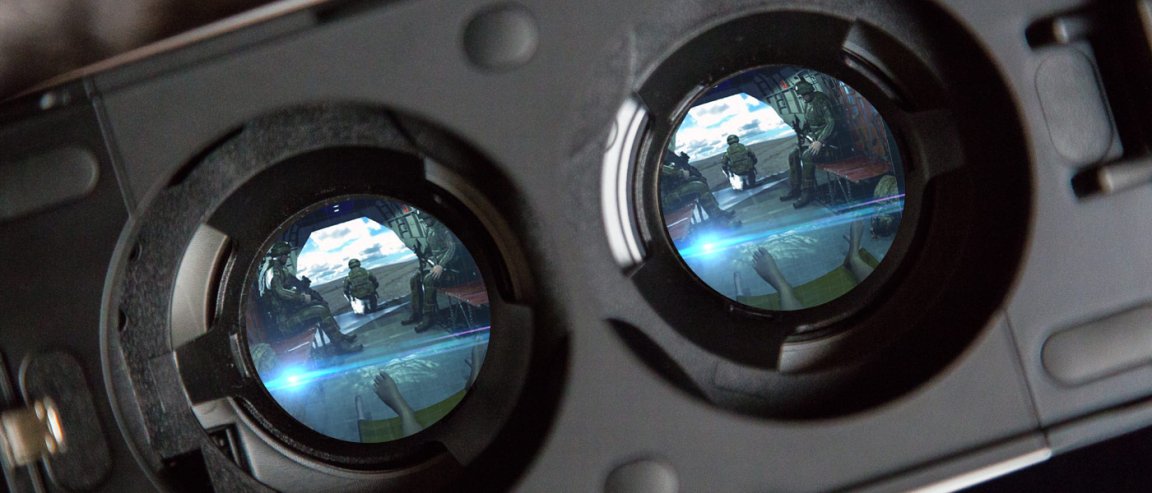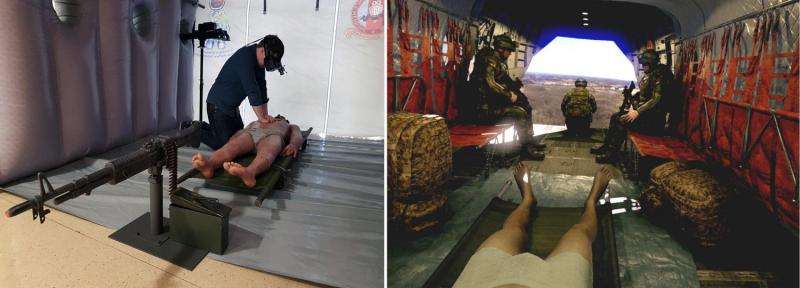
Virtual Chinook
A team of scientists is designing a high-tech solution that will train the UK Armed Forces’ Medical Emergency Response Team (MERT) to respond to battlefield incidents from the back of a helicopter.
Researchers at the University of Birmingham’s Human Interface Technology (HIT) are using virtual reality to help train medical personnel in emergency medicine or anesthesia. Emergency nurses, paramedics, and other emergency medical consultants can safely be trained in a visually realistic environment. The project combines a representative human body, and inflatable ‘Chinook’ interior as well as Virtual and Augmented reality aspects. Using these tools, the program shows medical personnel how to resuscitate and stabilize the wounded and safely transport them to a Field Hospital.

Medical Training With An Edge
The research team says it was no ordinary virtual or augmented reality project. The training made use of a detailed human male model. The body is capable of being configured to represent a wide range of injuries. It is complete with interchangeable lower leg components representing intact limbs, traumatic amputation, and repositionable bullet wounds and lacerations. The body, named Simbodie, was developed by the North Yorkshire based TraumaFX.
Simulator users are equipped with a head-mounted display and placed in the inflatable enclosure. This provides actual physical barriers that combine with Virtual and Augmented Reality imagery to generate realistic in-flight scenarios. “The intent behind this ground-breaking research project is for us to exploit cutting edge technologies and thinking to offer Defence Medical Services an agile and cost effective training option for future deployments,” says Professor Col Peter Mahoney, Consultant Anaesthetist at the Royal Centre for Defence Medicine.
Professor Stone realizes “the current virtual cabin is nowhere near as dynamic as the real operational context.” However, he does see the success of the team’s work as a valid proof of concept. He hopes for similar simulations to be made readily available to more trainees.